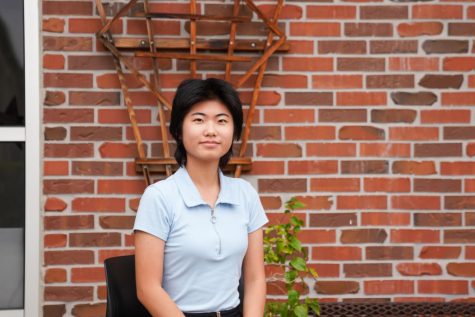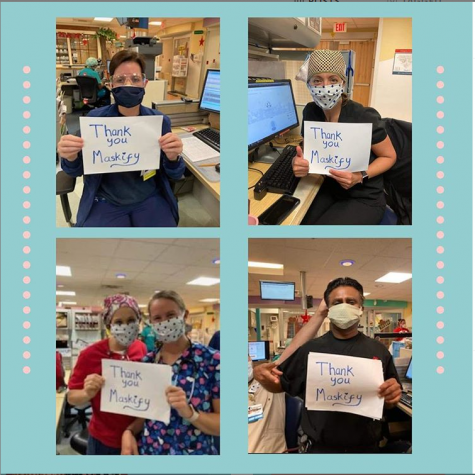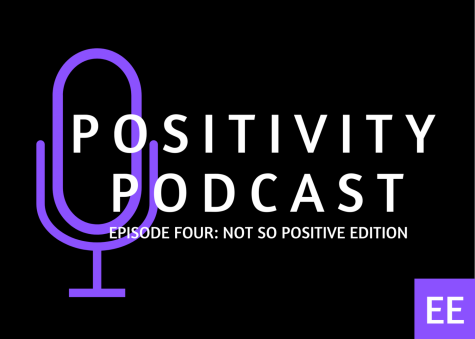The other side
Exploring how teachers are coping with challenges during distance learning
“I don’t know exactly how much my students are getting out of remote learning. I don’t know if I’m doing the best job I can do, because I don’t have any other experience doing this.”
More than a year into quarantine, many people have faced changes and struggles with adjusting. There’s often discussion about students and their situations, but what about the other side of the screen? How are teachers like English teacher Melissa Wright adapting?
One thing that Wright has found is that the technological aspect of distance learning had negatively affected her mental health.
“Because everything is so digital, I also felt a lot of stress that I had to be kind of working all the time,” Wright said. “And my work was so accessible. It was literally just on my laptop. So then there were times where I would be just doing work at night, which I normally wouldn’t do or and I’m doing a lot of work over the weekend because I feel like I have to. I’m bored so I’m just going to start grading things. So I definitely think I worked harder because work was just so apparent, like it was just right in front of me. So I can just pick up my computer and I can still watch TV but I’m still going to be answering emails or grading assignments. You guys don’t see this on Schoology, but on our end on Schoology, it tells you how many assignments you have to grade, which can be a little bit nerve-wracking. Like for example, if I click on my freshman classes which are all combined on Schoology, it says that there’s 376 ungraded assignments right now, so I’m just like, “Oh my god.” Like that’s so much for me to do. And I felt like I wasn’t able to separate work from my home life because they were just all smushed together, really.”
English teacher Elly Brown found one challenge brought forth by teaching remotely was balancing the duties of being both a teacher and parent of young children.
“One thing that was really important for my husband and I, is that we needed childcare, while we were teaching because I have a one-year-old and a four-year-old and so they require a lot of attention, especially the one-year-old,” Brown said. “And it was almost impossible to teach without having a child in my lap or crying or needing something in the background.”
Now, Brown’s parents visit and take care of the children, helping to shoulder that burden.
In contrast, Spanish teacher Steven Caringella, who teaches at both MVHS and Homestead High School, found his own wellbeing wasn’t drastically affected, and tries to put even more of his energy into helping his students, since he knows many of them are in difficult situations.
“My main focus is really on the mental health of my students,” Caringella said. “I know some students at both schools I work at that are going through a really hard time and so I’ve seen my role this year as to not only teach content but just to be a supportive teacher — to be flexible, to be understanding and to just really come along students and support them. So I feel like my role this year has been to just try to be an emotionally supportive teacher and I try to bring in humor and make it fun. I told the students I had three goals for them this year: number one was to participate; number two, speak Spanish; and number three, have fun.”
Although Caringella hasn’t faced many personal struggles because of the pandemic, as a teacher, distance learning has raised some challenges.
“Probably the main challenge, I know a lot of teachers feel the same way, is just not always being sure if you’re engaging your students in a way that you might engage them in the in-person classroom,” Caringella said. “For example, if I’m teaching in person, let’s say I’m doing an activity that clearly is not working for the kids or I’m seeing the kids are bored, I might switch it up right there in the moment and have them do something different. It’s more difficult over Zoom, I think, to gauge students’ reactions, gauge their nonverbal feedback. So I try to give students opportunities to give me feedback. Like at the end of the lesson I might ask them to tell me in the chat, ‘How engaging was that lesson?’ or ‘How well did that lesson help you learn?’ And then once a month or once every two months I’ll give them a formal survey with a Google form and just ask them ‘What’s working for you?’ and ‘What’s not working for you?’ and I try to incorporate their feedback and look at their suggestions on what I could do to help them have a really good experience.”
Caringella does small things to interact with his students, like when he does roll call.
“The way I take attendance every single time is I call students by name from my attendance list and they unmute — each time I call their name they unmute — and they greet the class in Spanish. And I’ve told them the reason why I do that is I want to make sure that they know I see and I acknowledge that they’re there and I’m glad that they’re there in class.
Brown and Wright both agree that engagement has been a key struggle of teaching effectively. Brown, specifically, has struggled with students interacting with each other.
“I think the biggest challenge has been learning how to get my students to interact through Zoom,” Wright said. “And so I’ve had to try different methods of doing that, different methods of engagement, because that’s really important to me and that’s important to me regardless of whether we’re in person, or teaching via Zoom. So one thing that I have done more of is experimenting with different types of group work or student engagement activities.”
Caringella has also been utilizing some new resources during distance learning and plans to continue using them during in-person learning; for example, Pear Deck, an application that allows students to view an instructor’s presentation and answer questions in real time, and Quizlet, an application involving studying tools, such as online flashcards. Additionally, he says that conducting assessments online has been very beneficial.
“When it’s time to give a quiz or a test, doing that through Schoology has been really helpful because you’re collecting all that data instantly, rather than having students turning in papers and then you have to look through each paper and you risk losing something — it’s just much more organized when it’s all online,” Caringella said. “So I think continuing to use Schoology is really good.”
Likewise, Wright has been learning and adapting through the process of distance learning, and it’s become much easier for her compared to how it was in the beginning.
“At this point, it’s kind of been like trial and error,” Wright said. “When we started this in March, it was a lot harder than it is now. So I learned that I do a lot better if I spend time on my Fridays or Saturdays planning the next week and making all my assignments, because I used to wait until Sunday night to do it and it would just be really stressful. I’ve learned that waiting till the last minute to grade everything is also very stressful, so trying to do more grading throughout the day is very helpful.”
“If you remember, last March, we only saw you guys a little bit, we weren’t required to be on Zoom all day and going from hardly seeing students on Zoom to being on Zoom for hours, every single day, it was a little hard,” Wright said. “I feel like I’m not a very outgoing type of person so being like, on camera on Zoom is very strange to me. Now I’m just so used to it, which is funny, but it was definitely an adjustment. And I think it’s just, at this point, because we’ve done it for so long, we’re just comfortable, we’re kind of used to it. But it took a while to get to that point where I felt comfortable on Zoom where I felt comfortable doing remote teaching and learning how to take care of myself.
Similarly, Brown has learned to overcome and cope with her own personal struggles.
“I think at the very beginning of the pandemic, like many other people there was a lot of fear and anxiety surrounding COVID-19, and a lot of uncertainty,” Brown said. “Still, there’s a lot of uncertainty, but especially at the beginning, I was a little bit scared and nervous about, especially my parents, getting COVID, since they are of the more at-risk age group. So I had a lot more anxiety and fear at the beginning of the pandemic. I think as the pandemic progressed, I had to think of ways to address my own mental health needs, because I am a social person and not being able to meet with friends was hard at some points, and I missed them so I’ve done Zoom get-togethers with friends, social-distanced walks outside have been nice. So that really helped that need that I had to be around people.”
When asked about whether the pandemic brought more harm or more good, Brown acknowledges that several positive effects have occurred.
“In many ways, I’ve become really grateful and appreciative of certain aspects of my life — my connection with my family, I feel like, is a lot stronger,” Brown said. “I think going into lockdown at the beginning of the pandemic really put things into perspective, like what was really important in my life. And so all of that is positive. And so there was a lot of self-reflection that I went through, having been in lockdown for a long time now. There were low points throughout the pandemic where I think a lot of people felt drained, but in general, I feel like I’ve learned how to cope pretty well with the challenge of being in lockdown and having to isolate. But if you had asked me this question at the beginning of the pandemic, I probably would have had a different answer. I probably would have expressed more fear, more anxiety, more uncertainty for the future. But at this point, I feel like I see a light at the end of the tunnel with vaccines rolling out, and I have a routine in place. I have taken up some new hobbies that have helped me and that I can continue to use even or participate in even after this pandemic is over. So for the most part, I feel like I have a positive outlook on life at this point.”
Wright admits that remote learning can be very difficult, but hopes that everyone can come out of it improved people.
“I definitely want us to come away from remote learning and come away from COVID-19 with this sense that as a society, we needed to have this kind of pause, that we learned some valuable lessons, we were able to put ourselves and our families first,” Wright said. “And maybe it’s nice to slow down. Maybe it’s important for us to really focus on things that matter. And it’s not always about grades, it’s not always about doing amazing on your math tests. It’s about being a good person, being a thoughtful person, like respecting your neighbors and just making sure everyone around you is safe and happy. I think it does have some positives to it. I mean, I definitely think it’s been hard for everyone but I do think that we have to come into whatever comes next, with a positive attitude, just to kind of make this situation the best it could be.”









